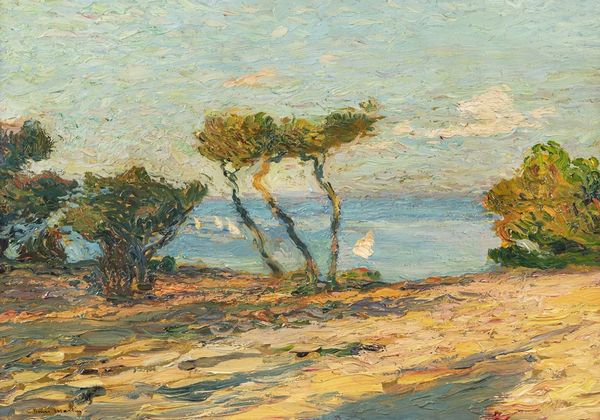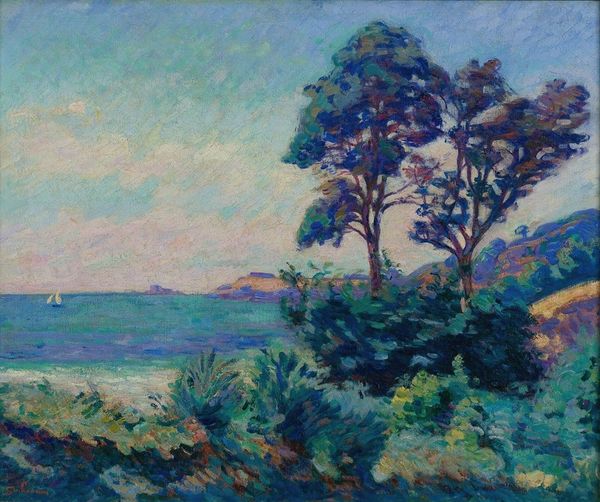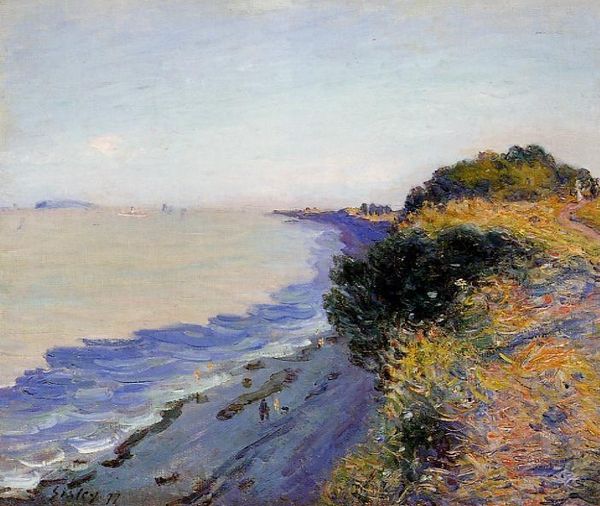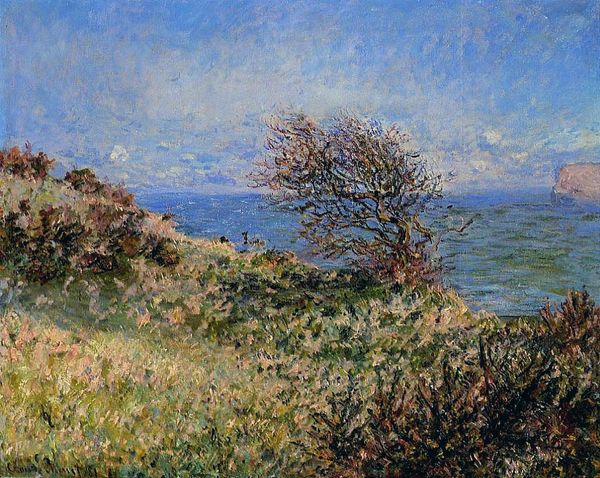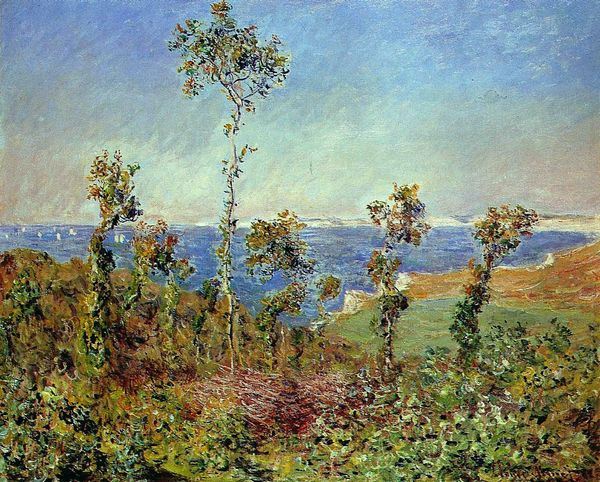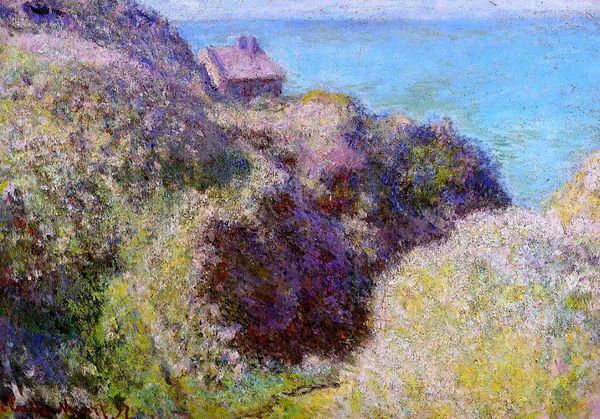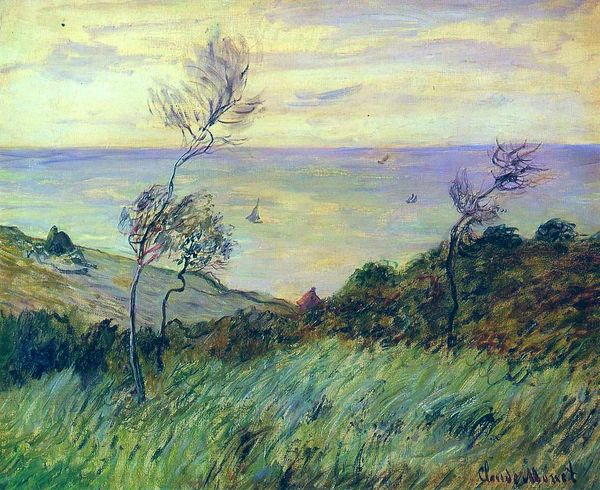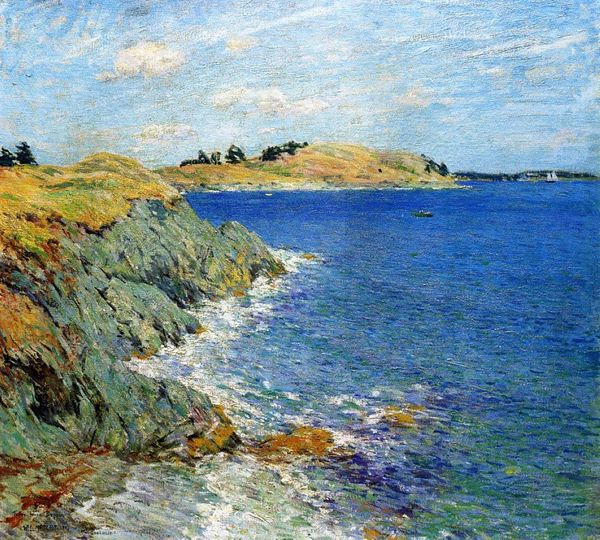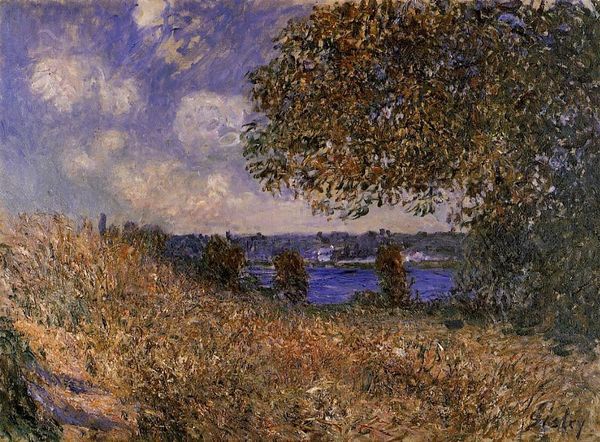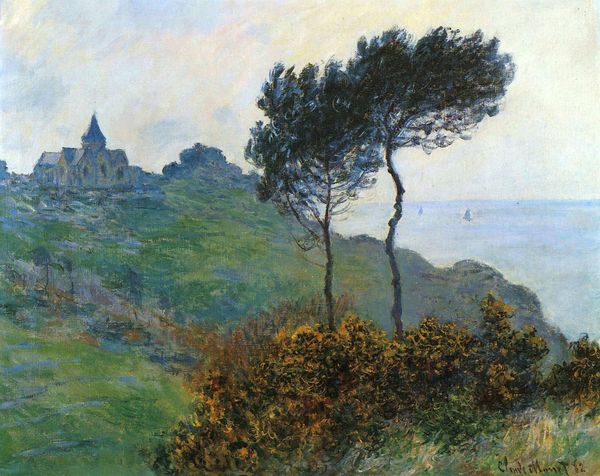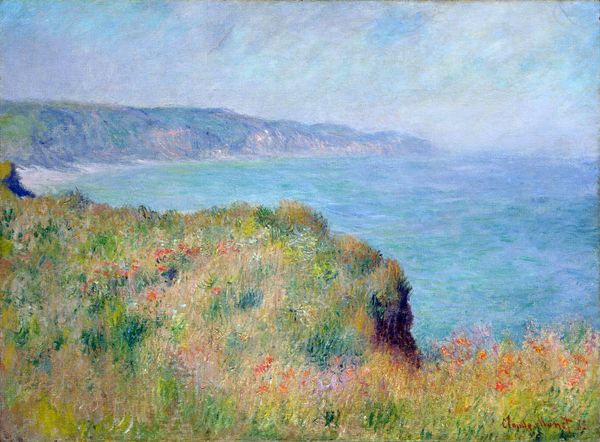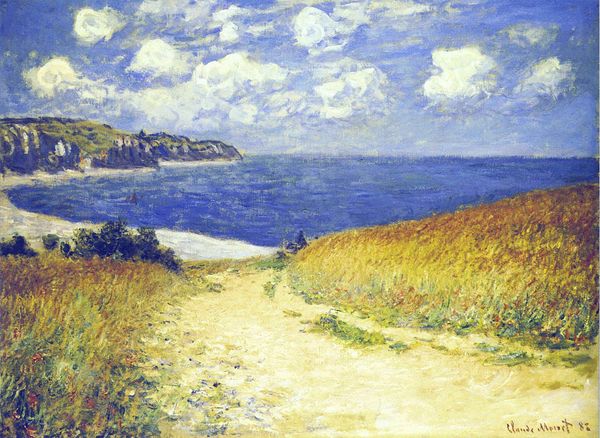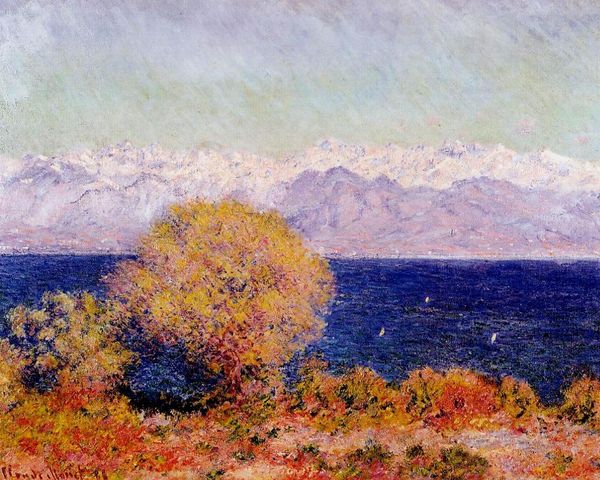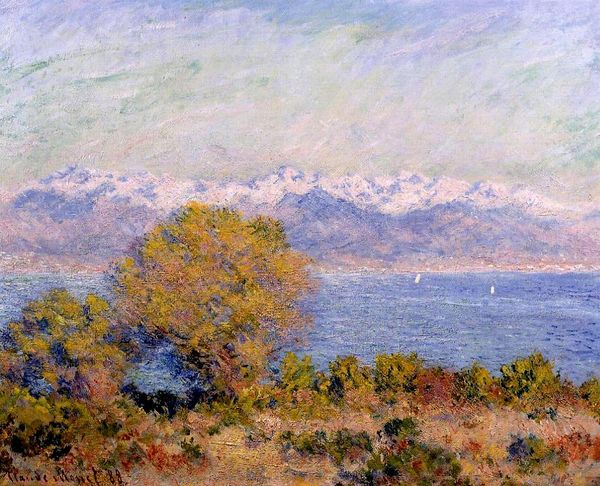
Copyright: Public domain
Claude Monet painted The Coast of Varengeville using oil on canvas. The work is a classic example of French Impressionism, a movement that sought to capture the fleeting effects of light and atmosphere. Looking at the image, we can see how Monet used broken brushstrokes and pure colors to depict the rugged Normandy coastline. This approach was revolutionary for its time, challenging the academic painting style that was taught in institutions like the École des Beaux-Arts. Instead, Monet and his fellow Impressionists embraced painting "en plein air," or outdoors, to directly observe and record the natural world. By the late 19th century, the art world was rapidly expanding, with new galleries and exhibitions providing artists with alternative venues to showcase their work. The Impressionists, through independent exhibition societies, were some of the earliest to take advantage of this new infrastructure. To truly understand Monet's work, we must consider the social and institutional context in which it was made. Resources such as letters, exhibition catalogs, and period reviews can shed light on the artistic debates and cultural values that shaped his art.
Comments
No comments
Be the first to comment and join the conversation on the ultimate creative platform.
